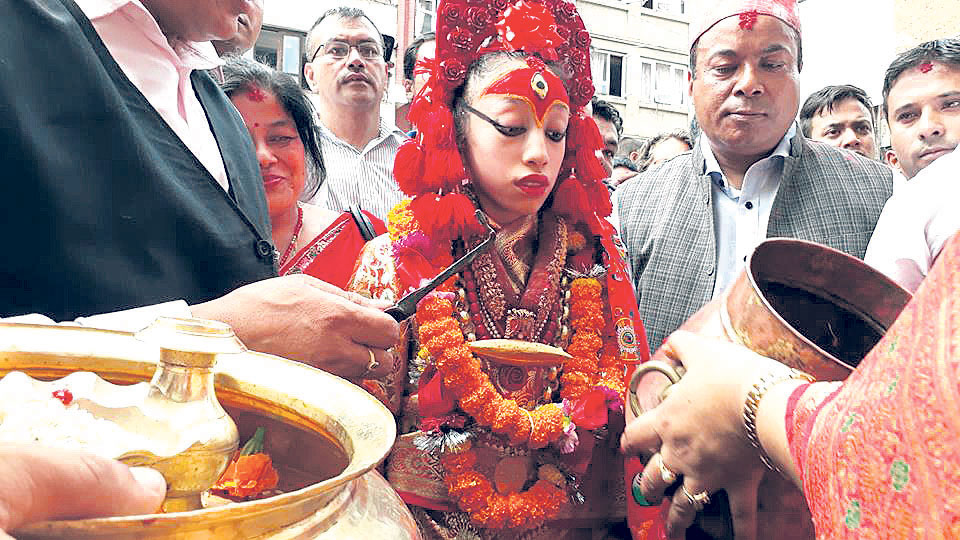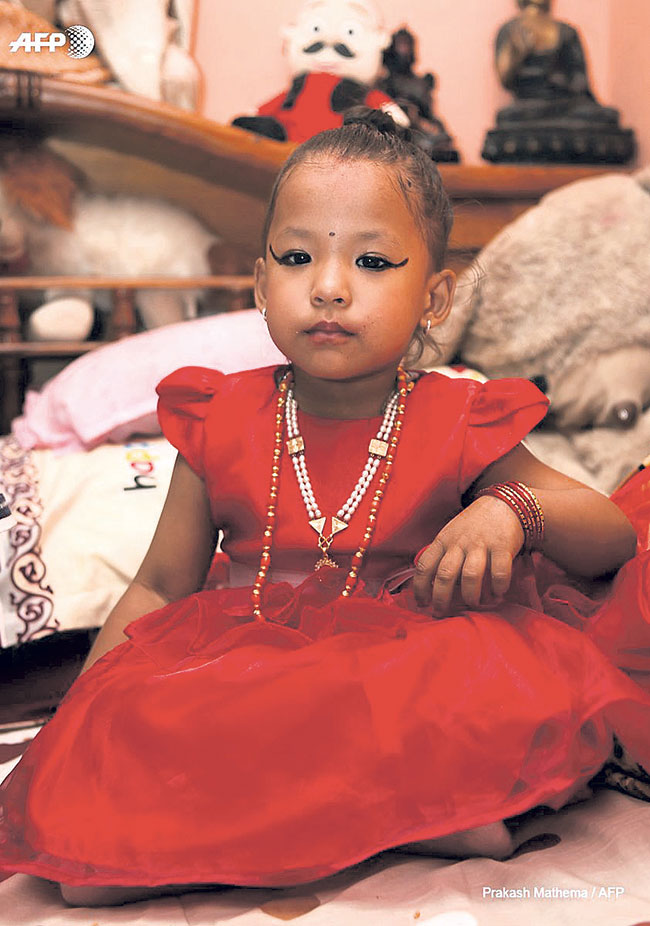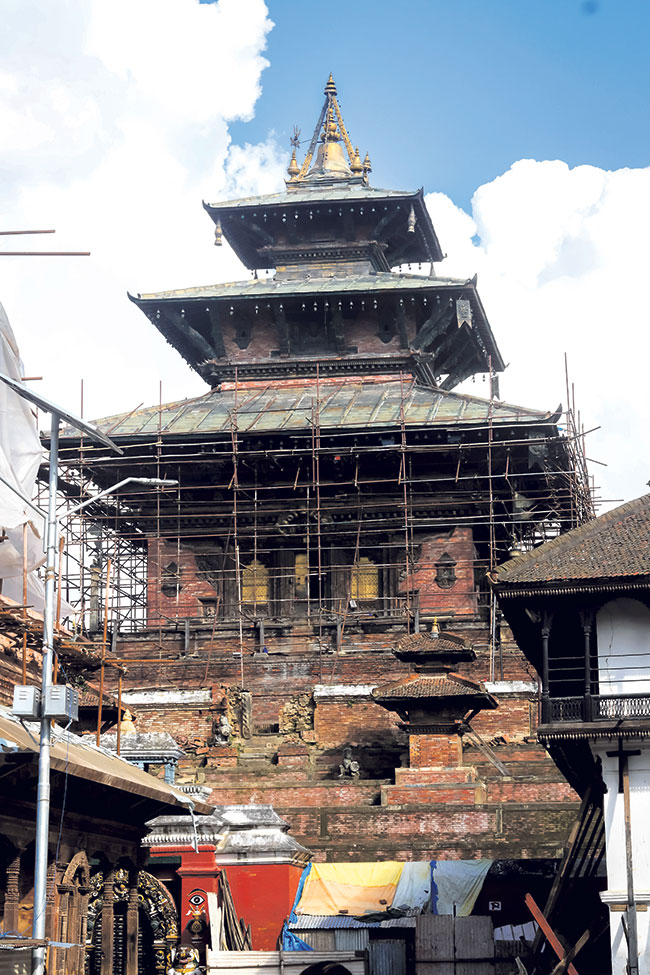A Room of One's Own- Creative Writing Workshop for Queer Youth
21 hours ago
We are a team of professional management and journalists — one of the best in the Nepali media. Our duty toward our readers is to provide them with impartial news, bold views, in-depth analysis and thought-provoking commentary. We shall do this without fear or favor, and we shall be guided by nothing but our conscience.
Know More
Taleju Bhawani is also known as the guardian deity of the country since the time of the Malla dynasty. The temple is believed to be built in the shape of a Yantra or tantric geometrical design on the advice of Goddess Taleju, who had manifested herself as a bee.
 Kathmandu is known as the city of temples, the Taleju Bhawani being one of most significant. The religiously and culturally significant Taleju temple boasts a majestic architectural beauty. This three tiered pagoda styled temple stands at the edge of Hanuman Dhoka Durbar area. The temple stands on a 12 stage plinth where on the eighth stage of the plinth forms a wall around the temple and consists of 12 miniature temples.
Kathmandu is known as the city of temples, the Taleju Bhawani being one of most significant. The religiously and culturally significant Taleju temple boasts a majestic architectural beauty. This three tiered pagoda styled temple stands at the edge of Hanuman Dhoka Durbar area. The temple stands on a 12 stage plinth where on the eighth stage of the plinth forms a wall around the temple and consists of 12 miniature temples.
Taleju Bhawani is also known as the guardian deity of the country since the time of the Malla dynasty. The temple is believed to be built in the shape of a Yantra or tantric geometrical design on the advice of Goddess Taleju, who had manifested herself as a bee. This temple was built in 1564 AD by then King Mahendra Malla and is opened for the public only on Nawami during the Dashian festival.
Moreover, the living goddess Kumari is believed to be the human incarnation of goddess Taleju. According to Uddhav Karmacharya, priest of Taleju temple, the living goddess Kumari is the tangible form of Taleju Bhawani while the intangible form of goddess Taleju (kalash) is in the temple.
 This year, three-year-old Trishna Shakya has been appointed as the new Kumari replacing former Kumari Matina Shakya, who retired at the age of 12 on September 26. Explaining the need to replace Kumari, Uddhav informed, “We periodically replace Kumari because they reach the age of puberty. Also, they become restless when the time comes. Being restless, not sitting on their ashan (seat) is the strongest sign that the Kumari needs to be replaced. Five members of the Guthi Sansthan Management Committee have chosen Trishna as per the rules.”
This year, three-year-old Trishna Shakya has been appointed as the new Kumari replacing former Kumari Matina Shakya, who retired at the age of 12 on September 26. Explaining the need to replace Kumari, Uddhav informed, “We periodically replace Kumari because they reach the age of puberty. Also, they become restless when the time comes. Being restless, not sitting on their ashan (seat) is the strongest sign that the Kumari needs to be replaced. Five members of the Guthi Sansthan Management Committee have chosen Trishna as per the rules.”
Talking about the prerequisites to choose a Kumari, Rajan Maharjan, festival coordinator of ward number 25, informed, “The girl must be from Shakya clan and must possess 32 pre-defined good qualities to become a Kumari.”
According to Uddhav, the selection of Kumari is done in secrecy where the management committee looks for qualities such as if the girl’s parents and grandparents are pure Shakya or not, if her tooth has fallen or not and if has she ever shed any blood, among others. “The child must not have any injury marks on her body and she should not be restless when brought to the Kumari’s seat. The power of Goddess Bhawani is installed on the girl child during the time of Dashain,” added Uddhav.
Moreover after the selection, the Kumari is taken to the Kumari Ghar, is not allowed to come out of the Ghar and is revered as the human form of Taleju Bhawani till she is of age to hit puberty. The living goddess also puts tika to devotees till Dashami at the Kumari Ghar. The house of previous Kumari is opened for the public to receive tika from the Kumari till Dashami.
According to Uddhav those who worship goddess Kumari are believed to be free from any negative energy. He added, “Goddess Kumari protects the worshiper from any negativity and blesses them with peace and prosperity.”
Leave A Comment